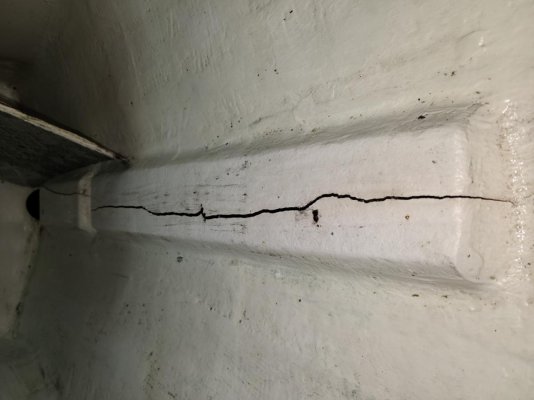BroadCove
Veteran Member
- Joined
- Oct 1, 2019
- Messages
- 78
- Location
- United States
- Vessel Name
- Say Goodbye
- Vessel Make
- Grand Banks 47 Eastbay FB
We've just purchased 2005 Grand Banks Eastbay 47. Although the boat was in good clean condition, while following the surveyor around, I noticed typical bilge "gunk" under the non-skid plates. So, following the sale, I pulled those up and cleaned it all out.
I noticed the support for those plates have longitudinal cracks all the way along. As best I can tell, these are not structural in any way (except for supporting the deck plates). It appears that they are just 2x4 lumber or similar glassed in on top of the hull.
Nevertheless, liquids can clearly intrude/seep in there. Would you fill them? I'm thinking simply silicone if I do. The boat has been out of the water for months now, and I cleaned the bilge a month ago, so it's as dry now as it's going to get.
I noticed the support for those plates have longitudinal cracks all the way along. As best I can tell, these are not structural in any way (except for supporting the deck plates). It appears that they are just 2x4 lumber or similar glassed in on top of the hull.
Nevertheless, liquids can clearly intrude/seep in there. Would you fill them? I'm thinking simply silicone if I do. The boat has been out of the water for months now, and I cleaned the bilge a month ago, so it's as dry now as it's going to get.

